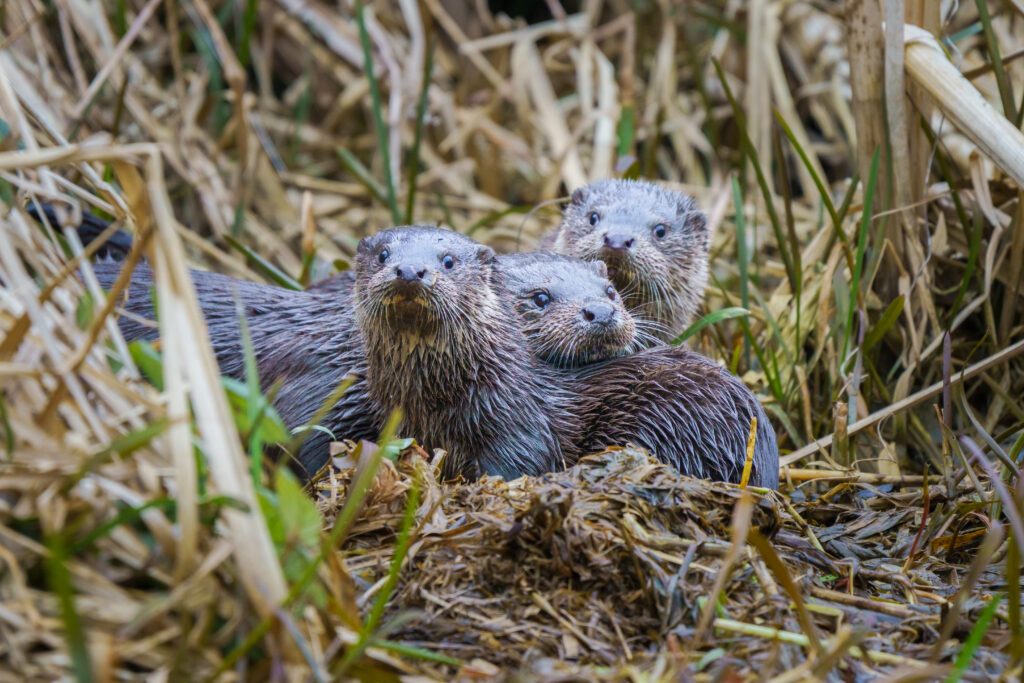Riparian Mammals
Local Wildlife Corridors
The State of Nature Report 2019 highlights the UK as one of the most nature depleted countries in the world. Despite major works to identify and protect habitats in recent decades, wildlife has been decimated by centuries of persecution, pollution and habitat loss and steps taken have not been sufficient to halt declines.
Almost all land surrounding Grayshott is within the ‘Wealden Greensand Biodiversity Opportunity Area’ – one of the most important areas for wildlife conservation in Surrey and Hampshire. The largest expanses of UK lowland heathland are within the Ludshott and Bramshott commons on one side and the Punchbowl on the other. To the rear are sweeping expanses of ancient and semi-natural woodland in Whitmore Vale and the Golden Valley which provide irreplaceable ecological features and habitats.
Animals use links such as hedgerows and streams to move within these sites and further afield to Lynchmere and Marley Commons, to Blackdown, and to the Wey & Rother Valleys. The importance of these small connections can be overlooked and are easily damaged. Small mammals such as dormice will not venture into grassland or open space, requiring prickly cover between them and predators at all times. If owners of a hedge aren’t aware of the effects, removing a section is an easy mistake to make, but can doom dormice. Other species cannot venture far from water and use ponds to hop across a region. A new, beautifully painted fence that cuts off a garden pond in an otherwise arid space can block access to a whole terrain.
Just how important these links are to overall animal population health is unknown and the aim of local community organisation, Haslemere Vision, is to find out. Volunteers have formed a Biodiversity action group and commissioned two ecologists to identify and map key wildlife corridors and stepping stones. The funding to make this possible was supplied by The Haslemere Society, Haslemere Town Council, the Lob’s Charity and CPRE Surrey, for whose support we are incredibly grateful.
Part of the work has been pulling together existing data and part in putting into place local wildlife monitoring projects. Mapping links between these small habitats is a big task, so to make it manageable work is focussed on three areas; 1) Local river corridors and riparian mammals, 2) Hedgerows and dormice and 3) Garden ponds and newts.

Three small observation rafts have been set up along local river corridors and will be in place for about a year. We hope to find otters, which had disappeared entirely from large parts of the country but in 2020, were reported 15km downstream of Grayshott on the River Wey! We plan to install the last raft in the feeder stream to Frensham Great Pond (sourced from Golden Valley) in Whitmore Vale, which is the closest water-course to the previous sighting. The key period for detecting otters is early spring, when they disperse, often heading upstream towards the river source. We also hope one day find water voles back, this species having dramatically declined across our region and very likely extinct from the River Wey. Understanding what mammals are living here will guide improvement to river corridor habitats.
50 dormouse nesting boxes are being deployed to monitor this secretive creature, in partnership with the Surrey Dormouse Group. Seriously endangered and undeniably cute, dormice rarely descend to ground level (living in deciduous woodland canopy and tall hedgerows) other than to hibernate. Hazel trees, beech nuts and berries provide favourite sources of food. There are numerous records of them in the area, despite being difficult to spot! Monitoring these nesting boxes will help us identify important hedgerow/woodland corridors and develop advice on how to encourage this species locally.
The last project area is surveying garden ponds. A small ‘In Search of the Water-Dragons’ project was piloted earlier in 2020 and provided useful insights to inform more ambitious initiatives in the future. Haslemere Society residents diligently checked ponds; feeding back sightings of newt and other wildlife and we’d like to thank all those who participated.
Whilst we are blessed with an abundance of habitats, there are weak spots and many could be connected better with small amounts of strategic planting. Potential benefits may be exponential and could well be one of the keys to slow species decline.
To be kept up to date on the work, email info@haslemerebiodiversity.org.uk and we’ll happily supply updates. Funds/resource permitting, projects will be rolled out more widely, so any pond-owners willing to report amphibious visitors, or landowners keen to house part of a chain of dormouse nesting boxes, please do get in touch!